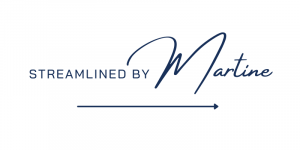
Your CRM Is Not A Client Experience Strategy
What *is* a client experience strategy really?
So you bought a Dubsado plan.
You spent a weekend elbow-deep in YouTube tutorials and Dubsado blogs, and finally figured out how to connect your scheduler to your lead capture to your proposal (you think). Cue the confetti, right?
Except your clients are getting bombarded with 6 emails in a row, and your reminders are either pulling a disappearing act or refusing to stop. Someone booked a call for 30 minutes from now, but you’re not entirely sure who, and your contract isn’t pulling in the right package information.
Remind me again how this was supposed to make your life easier?
Here’s the thing: your CRM is a tool. Not a strategy.
It’s like buying a chic day planner and assuming your life will organize itself. But without a plan—without knowing your priorities, what needs to happen when, and why—you’re just writing lists that look good and go nowhere.
Your CRM doesn’t know your clients or understand your process. It’s not thinking about whether your emails feel supportive or your forms make sense. It’s just doing what it’s told. And if you haven’t mapped out how you want your client process to feel, function, and flow…your CRM’s running the show with zero direction.
Which brings us to the part that does give it direction: your client experience strategy.
What Is a Client Experience Strategy? (And Why Should You Care?)
A client experience strategy is the step-by-step plan for how clients move through your business, from the first inquiry to the final deliverable. It’s what you send, when you send it, how you communicate, and what your clients need at every stage to feel clear, confident, and not overwhelmed.
And no, it’s not only about making things look ‘polished’ or ‘professional.’ It’s about knowing:
- What info clients need, and when they actually need it
- What you need from them to keep things moving
- Where people usually get stuck, flake, or go quiet
- How to guide the project without micromanaging it
But what all this looks like in your CRM? Completely depends on the kind of work you do.
I’ve worked with copywriters, web designers, and interior designers, and none of their client journeys look the same.
Copywriters are chasing feedback and clarifying vague comments. Brand designs are reminding clients that no, this isn’t the part where we pick fonts. Interior designers are managing vendors, installs, and a sofa that arrived three weeks late and in the wrong colour.
Different workflows. Different friction points. Different strategies.
That’s why before I even touch your Dubsado during your VIP Week, we start with strategy—how you work, where things stall, and what your clients need to feel supported from start to finish.
Why Your CRM Alone Isn’t A Client Experience Strategy…Sorry, Dubsado
CRMs like Dubsado and Honeybook are incredible…once you know what you want them to do. Because they are systems, not strategy consultants. And yet, most people set up their CRM like it can read their mind.
That’s where things go sideways.
When you skip the strategy and dive straight into building, you end up with workflows that seem polished but feel completely disconnected from how your business runs. Here’s what that usually looks like:
- Your client gets five emails back-to-back, but they still aren’t sure what their next step is.
- Meanwhile, payment reminders are hitting their inbox while they’re waiting on content, so now they’re confused and frustrated.
- Then there’s the call someone booked during your dentist appointment, because your calendars aren’t synced.
- And that so-called ‘automated process’? Still needs you to manually check it every step of the way.
The thing is, your CRM’s doing exactly what you told it to. It’s just that what you told it to do doesn’t make sense without a strategy behind it. So now it’s sending things out of order, skipping steps, and making your process messier than it is.
Dubsado’s not broken. You just built it backwards.
Client Experience Strategy First, Your CRM Second
Your CRM can’t fix a broken process—it can only automate it. That’s why, during a Dubsado VIP Week, I don’t start with workflows. I start with strategy:
- Map your processes
We zoom all the way out and map your full client journey. Looking at what happens, when it happens, and what’s getting lost along the way. - Identify friction and touchpoints
Then we get honest about what feels clunky for you and your clients. The moments that need more clarity, more support, or to be deleted completely. - Matching your Dubsado
Once the journey’s mapped and the touchpoints are dialed in, then I build your workflows. Every email, form, and automation is shaped by the strategy we built.
What Happens In Your CRM When You Start With Strategy?
By this point, you get it: your CRM isn’t the problem. The missing piece is the strategy behind it—the stuff that makes your systems feel thoughtful, seamless, and aligned with how you work.
So what does it look like after we map your process and rebuild your backend with intention?
Before: Clients get ghosty mid-process
After: Clients are naturally led through your process
Before: Clients get spammed with 27 emails
After: Clients feel supported and know what to do
Before: You triple-check every workflow
After: You trust your system matches your flow
This is why I don’t start with tech, I start with your process. Then I build systems that reflect it. The result? A system that flows, feels personal, and doesn’t stress you or your clients out.
